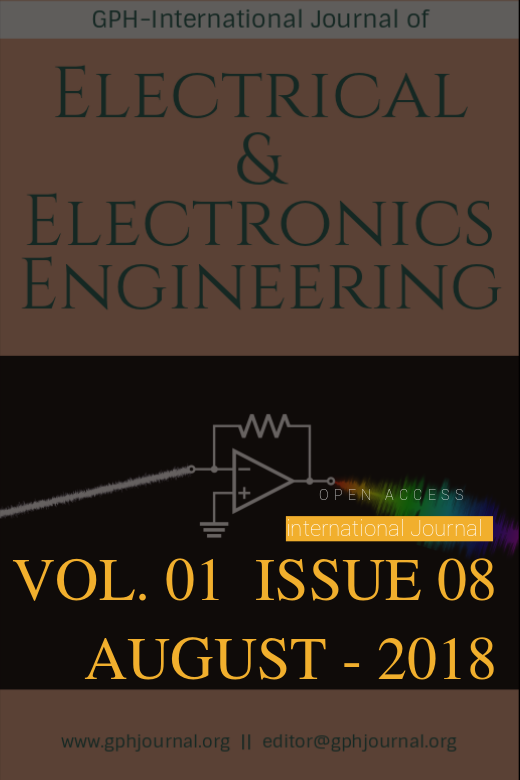Application Of Supervised Machine Learning To Characterize Brain Tissue And To Discriminate Benign Lesions, Various Grades Of Glioma And Metastasis
Abstract
Supervised Machine Learning (SML) an extremely powerful classifier was
applied for diagnosing the various pathological lesions in the brain, like edema, multiple
sclerosis MS), glioma of different grades and metastasis. MR Images may show structural
changes in the brain lesions (Figure 1). MR Spectroscopy can also show change in the
metabolite peaks and quantities in different disease state
(Figure 2). But it is frequently difficult to diagnose the exact disease. Use of SML by two
strategies like Artificial Neural Network (ANN) and Support Vector Machine (SVM) helps
identifying the condition in doubtful cases. The SVM and ANN train on data sets gathered from
different patients based on input variables – Refractive Index,T2 relaxation values, Choline
(CHO), Apparent Diffusion Coefficient (ADC), Creatine (CR), CHO/NAA (N-acetyl aspartate),
CR/NAA, LIP/LAC (Lipid/lactate), MI ( Myoinositol), CHO/CR and T2 value in the periphery
of lesion. Refractive index is a vital physical parameter. After training the data, prediction by
ANN and SVM show high accuracy in diagnosis. The training and testing have been carried
out by Neural Tool in ANN and SVM classifier tool in MATLAB respectively.
Downloads
References
to tissue characterization by refractive index : Initial experience. Indian Journal of Radiology
and Imaging 2002;12:169-178.
2 Mehryar Mohri, Afshin Rostamizadeh, Ameet Talwalkar (2012) Foundations of Machine
Learning, The MIT Press ISBN 9780262018258.
3. Stuart J. Russell, Peter Norvig (2010) Artificial Intelligence: A Modern Approach, Third
Edition, Prentice Hall ISBN 9780136042594.
4. Biswas TK, Luu T, In vivo MR Measurement of Refractive Index, Relative Water Content and
T2 Relaxation time of Various Brain lesions With Clinical Application to Discriminate Brain
Lesions. The Internet Journal of Radiology 2009;13(1).
5. T K Biswas, R Bandopadhyay, A Dutta, Validating The Discriminating Efficacy Of MR T2
Relaxation Value Of Different Brain Lesions And Comparison With Other Differentiating
Factors: Use Of Artificial Neural Network And Principal Component Analysis. The Internet
Journal of Radiology. 2017 Volume 20 Number 1. ISPUB DOI: 10.5580/IJRA.52614
6. T K Biswas, S R Choudhury, A Ganguly, R Bandopadhyay, A Dutta, Refractive Index As
Surrogate Biological Marker Of Tumefactive And Other Form Of Multiple Sclerosis And Its
Superiority Over Other Methods, Internet Journal of Radiology,
https://print.ispub.com/api/0/ispub-article/46167.
7.Kono K, Inoue Y, Nakayama K, et al. The role of diffusion-weighted imaging in patients with
brain tumors. AJNR Am J Neuroradiol 2001; 22: 1081–1088.
8.Pauleit Dirk, Langen Karl-Josef,Floeth Frank, Markus J Riemenschneider, Reifenberger
Guido, Shah N. Jon ,Müller Hans-Wilhelm Can the apparent diffusion coefficient be used as a
noninvasive parameter to distinguish tumor tissue from peritumoral tissue in cerebral
gliomas?.J Magn Reson Imaging. 2004 Nov;20(5):758-64.
9. G. James Variance and Bias for General Loss Functions, Machine Learning 2003; 51, 115-
135.(http://www-bcf.usc.edu/~gareth/research/bv.pdf
10. Haykin S., Neural Networks: A Comprehensive Foundation, 2nd edition, Pearson Educ.
Asia, Hong Kong, 2001.
11. Bishop C.M., Neural Networks for Pattern Recognition, Clarendon Press, Oxford, 1995.12.Text Book of Support Vector Machines (SVM), http://www.statsoft.com/Textbook/SupportVector-Machines
13. Mingxia Liu,Daoqiang Zhang ,Songcan Chen.Hui Xue,Joint Binary Classifier Learning for
ECOC-Based Multi-Class Classification IEEE Transactions on Pattern (2015),2335 – 2341
14. PanosM.Pardalos,Hyperplane Arrangement in Optimization Srpringer, Boston,MA,ISBN
978-0-387-74758-3.
15. Support Vector Machines for Binary Classification
https://in.mathworks.com/help/stats/support-vector-machines-for-binary- classification.html
16. Samuel, Arthur, Some Studies in Machine Learning Using the Game of Checkers. IBM
Journal of Research and Development,1959;Vol 3(3): 210–229
17. Wells, S Lillian, Stereotaxic Brain Biopsy, https://neurosurgery.ufl.edu/residency/aboutus/clinical- specialties/stereotactic-brain-biopsy/
18. Michal Antkowiak, Artificial Neural Networks vs. Support Vector Machines for
Skin Diseases Recognition, Master’s Thesis in Computing Science, Department of Computing
Science, Ume°a University 2006 https://www.iitk.ac.in/eeold/archive/courses/2013/intelinfo/d4pdf2.pdf
Author(s) and co-author(s) jointly and severally represent and warrant that the Article is original with the author(s) and does not infringe any copyright or violate any other right of any third parties, and that the Article has not been published elsewhere. Author(s) agree to the terms that the GPH Journal will have the full right to remove the published article on any misconduct found in the published article.









 Street. Viaductweg 186, City. Bruchem, State. Gelderland, Zip code 5314LK, Netherlands
Street. Viaductweg 186, City. Bruchem, State. Gelderland, Zip code 5314LK, Netherlands

